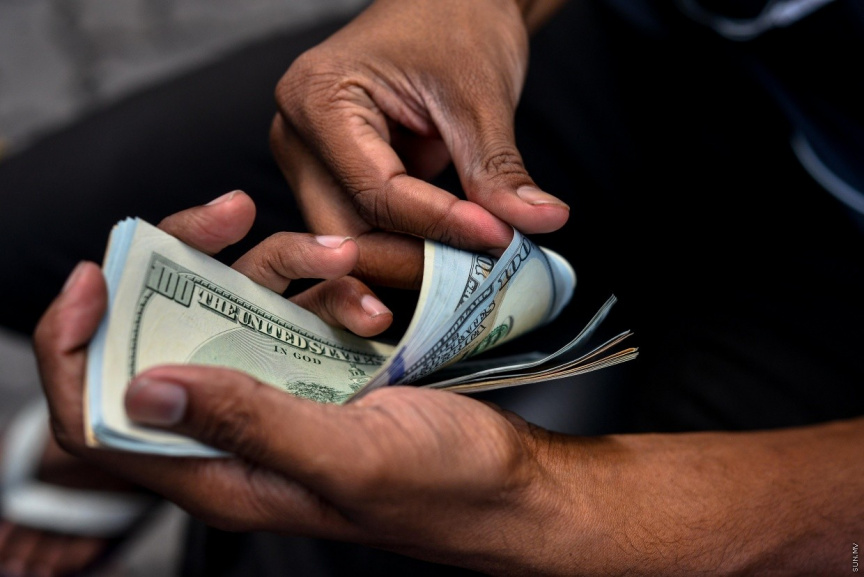Is US dollar’s longer-term downtrend is in play?
The US dollar remains on the back foot and, while there could be some short-term relief as the US Administration starts to agree trade deals, many analysts believe that a longer-term downtrend is now in play.

In the Standard Bank’s view the decline in the US dollar is down to three factors. The first is the loss of socalled US ‘exceptionalism’. The second is related to the poor policy choices of the Administration. And the third is related to the relative overvaluation of US assets in recent years.
On the first of these, Q1 GDP data this week should demonstrate the scale of the slowdown in the economy since the start of the year. GDP is seen rising by an annualised 0.4%. That would come after an average annualised growth rate of 2.5% through 2024 and we anticipate that full US growth for 2025 will be in the region of three-quarters of a percent; broadly similar to what we expect from many of its peers in Europe, such as the euro zone and the UK.
Clearly this relative slowdown in the US could prove a temporary reaction to the uncertainty associated with tariffs. But we see a more permanent levelling out of the G10 growth landscape, not least because many other nations are being forced to take remedial action to counter US policy. In Europe, for instance, governments are announcing increases in defence spending to fill the gap that seems likely to be left by the retreating US Administration.
The second issue that the Standard Bank thinks will weigh on the US dollar for some time are the poor policy choices of the US Administration. If we take tariffs, we don’t doubt that many US politicians feel frustrated that the US runs such huge trade deficits and might think that tariffs are the solution.
“We don’t think that’s the case and believe that external investors in the US feel the same way. Another point is that the counterpart of these large trade deficits are the hefty capital inflows into the country that, in many respects, have allowed the US to maintain this ‘exceptional’ growth performance. If trade improves, the counterpart is very likely to be a decline in this exceptionalism”, said Steven Barrow, Head of Standard Bank G10 Strategy.
However, it is not just on tariffs where the US Administration seems to be taking policy decisions that could undermine trust in the country and the value of its assets. For instance, the focus on crypto and the rejection of a central bank digital currency appear to be decisions that will do little to enhance the US dollar. Other central banks, such as the ECB, for instance, may see this as a chance to improve the international role of the euro.
The third factor we’d cite as a longer-term structural risk to the US dollar is the relative overvaluation of US assets; particularly the stock market. Admittedly, this has long been cited as a concern given very elevated price/earnings multiples in the US relative to peers in the G10. And for a very long time it has been ignored – up to now.
Steven Barrow regards this, not as an absolute bubble, but as a relative bubble compared to other countries and it now looks as if this bubble has popped. Of particular concern for the dollar is that equity withdrawal from the US by foreign investors, or, at least, a much slower rate of accumulation, is likely to diminish the demand for dollar as there is usually less currency hedging of equity positions than we find in other assets, such as bonds.
In addition to the relative overvaluation of US equities there’s the relative overvaluation of the US dollar as well; something that the US Administration is well aware of. This being said, Steven Barrow does regard speculation about a ‘new Plaza deal’ to bring down the value of the US dollar as misplaced. He also suspects that this is a common view amongst investors.
Nonetheless, if there is any takeaway from the Administration’s performance to date it is that nothing should be ruled out, however outlandish it might seem. So, even if the chances of a new accord to weaken the US dollar are very remote, the mere fact that such speculation exists may be sufficient to remind the market of the dollar’s overvaluation and so keep traders and investors on the defensive when it comes to long-dollar exposure.
“While any rapid agreement of trade deals with the likes of India, Japan and the UK could help lift the dollar in the short-term, towards 1.10 against the euro, or 150 against the yen, we’d regard any dollar strength as an opportunity to sell for the long haul given our targets for 1.25 for euro/dollar and 125 for dollar/yen”, said Steven Barrow.








